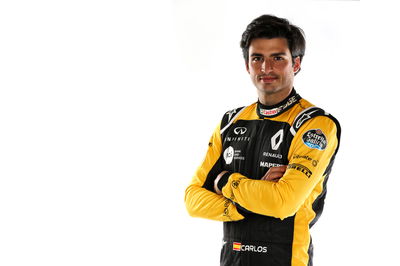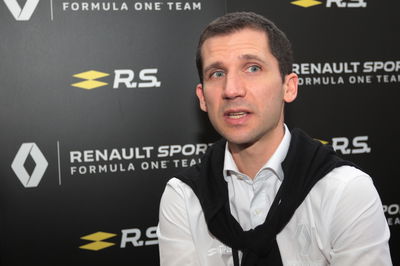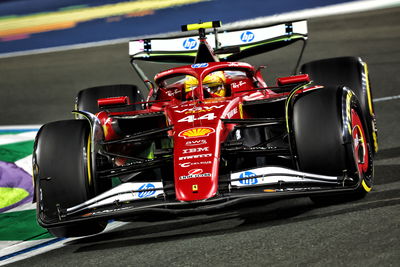Sainz: F1 drivers will need just 20 laps to adapt to Halo
Carlos Sainz has predicted Formula 1 drivers will require just 20 laps to fully adjust to the Halo cockpit protector on the 2018 cars as he throws his support behind the device.
Sainz, who joins Renault on loan from Red Bull for the 2018 F1 season, is confident the Halo won’t disturb his vision in the cockpit of the R.S.18 and from his previous experiences experimenting with the cockpit protector believes it won’t take long to adjust to.

Carlos Sainz has predicted Formula 1 drivers will require just 20 laps to fully adjust to the Halo cockpit protector on the 2018 cars as he throws his support behind the device.
Sainz, who joins Renault on loan from Red Bull for the 2018 F1 season, is confident the Halo won’t disturb his vision in the cockpit of the R.S.18 and from his previous experiences experimenting with the cockpit protector believes it won’t take long to adjust to.
The Spanish driver is gearing up for pre-season testing on home soil at Circuit de Catalunya and feels after 20 laps drivers will be comfortable with the Halo while he’s curious to understand the aerodynamic impact of the device on the new F1 cars.
“I think it can be an effective device,” Sainz said. “As drivers, we will have to adapt to it, 20 laps or so in testing should be enough time.
“The engineers will see how it affects aerodynamics. I have seen the work done in the wind tunnel back in the factory but now we need to test its behaviour on track.
“Visually, I don’t think the halo looks too bad once it has been integrated in the car. We will all get used to it and it will be normal fairly quickly.”
Last week Williams technical boss Paddy Lowe claimed everyone would forget about the Halo after just two races and the general reception of the F1 cars already launched, including Williams and Renault, has seen the Halo receive positive feedback in terms of integration.
The Halo becomes a mandatory safety device on all F1 cars from 2018 after being ratified into the sport’s rules by the FIA late last year.











